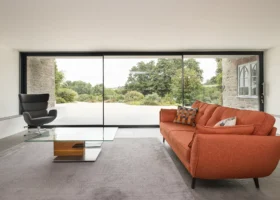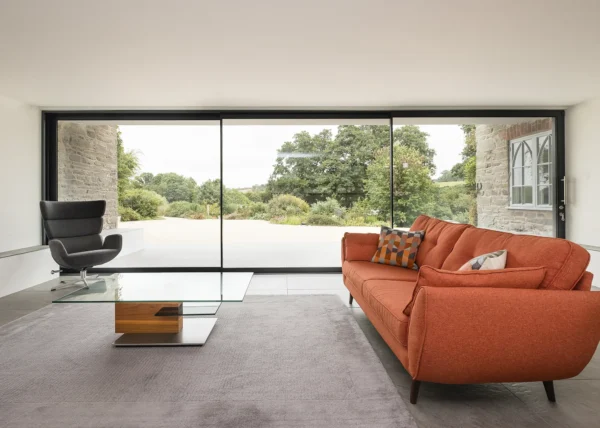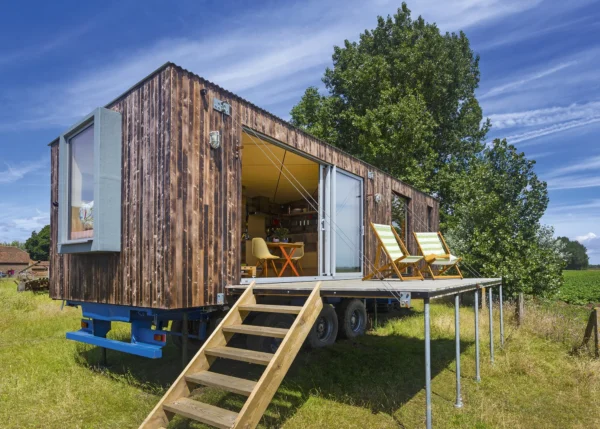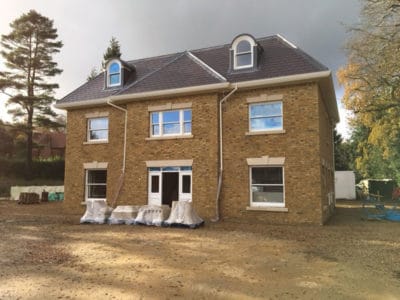The Future of Self Build
The 2010s have been a pretty good decade for self builders and renovators. The sector has finally made its voice heard in government, with legislation now in place that seeks to enable more choice and quality in helping to solve the UK’s housing crisis. But where do we go from here?
Some developments are almost inevitable: the government has already announced plans to ban the installation of gas boilers in new homes by 2025, for example (though the legislation isn’t yet in place).
Other evolutions will be more to do with improving quality of living. And there’s always more work to do to in terms of making it easier for the millions of people across the UK who want to build their own home to get their projects started. Here are five areas we’re likely to see paradigm shifts in over the coming years:
1. There will be more serviced plots
At the start of this special anniversary section, we highlighted that finding viable land was a challenge even back when Build It first launched. We still need more, better quality homes in the UK – and self build represents one of the best ways to deliver them in a way that communities can accept – but it’s not always straightforward for an individual to find a decent plot.
Learn more: How to Find a Plot: The Complete Guide
Happily, we’re seeing more and more provision of so-called serviced plots – usually enabled developments with roads, key utilities and blanket planning permission (subject to some design parameters) in place. Done well, it’s a win-win for landowners, communities and self builders alike.

The success of Graven Hill should see more councils looking to deliver large-scale custom build schemes
So we expect to see both demand and supply rise sharply over the next few years – with the potential to deliver thousands more opportunities to create high-quality individual homes.
2. Smart homes will become the norm
Modern tech is all about making life easier: most of us now do our banking from an app, and check out the traffic on Google Maps before deciding how to get to work.
Smart tech for the home is booming, too, and building from scratch means you can take full advantage of these systems to create a living environment that’s easier and more enjoyable to live in.
At the Build It Education House a single press of a button can set a ‘welcome home’ mode when you come in; or an ‘all-off’ function (including setting the alarm and initiating presence simulation mode) if you’re the last one out.
Can Government Make it Easier for Everyone to Self Build?Richard Bacon, the MP who masterminded the Self & Custom Housebuilding Act that requires all local authorities to permission enough serviced plots to meet demand, shares his thoughts on what he’d like to see under the next government: “The future is bright for self build, and I’m hoping to see it grow significantly. One very big thing that we shouldn’t underestimate the importance of is the Conservative party’s explicit manifesto commitment to allow people who want to build their own homes access to the Help to Buy scheme. We’ve been lobbying on that for a very long time and it will mean Help to Buy isn’t only being accessed by the large housebuilders who use it to make homes easier to sell, rather than improving quality – as self builders would. There’s much more to do. At the moment councils can charge a fee for people to be on their self and custom build registers. But the cost of keeping these lists is tiny, so I hope in the new parliament I’ll have the chance to push the case for revoking these charges. I’m also keen to work with the Ministry for Housing, Communities and Local Government (MHCLG) to promote good practice among local councils. The likes of Kings Lynn and West Norfolk, who recently won a Build It Award, are doing a lot and with the right push from MHCLG, we’ll see more of that kind of action everywhere. The government’s job is to make it really easy for people to build their own home, so ultimately, I would be in favour of local councils being mandated to provide serviced plots – because then you know that it will definitely happen. I’d also like to be able to visit a plot shop anywhere in the country to find land, and to see the kind of customised finance packages that you can access when you go to your local car dealership. We’re going in the right direction – but let’s make accessing self build even easier.” |
The tech is becoming much more joined up, and crucially, if you get the infrastructure right it will help to future-proof your project, allowing you to adapt functions to suit your changing needs.
What’s more, the cost is now within reach for most self builders: a basic hard-wired smart home setup with room to accommodate later upgrades can cost as little as £5,000 more than traditional electrics – but gives you so much more control and flexibility.
3. Finance will be more accessible
And crucially (if the 2008 financial crash taught us anything) it will be made accessible in the right way. We’ve already mentioned how BuildStore is introducing guaranteed stage payment mortgages based on your actual build costs – giving you much better certainty about your cashflow when building your own home.

Baufritz picked up this year’s Build It Award for Best Offsite-Manufactured Project for this London home, which was factory-built using low-carbon components and avoiding toxic materials
The next jewel in the crown is getting the government to agree to making Help to Buy accessible to self builders, which may be just around the corner.
4. We’ll build healthier homes
For many years, the focus for Building Regs in the UK has been on making our homes better insulated and more airtight – and with good reason, as government bids to rein in carbon emissions to meet its legal commitments. The result is highly sealed boxes that need to be mechanically ventilated to bring fresh, filtered air. These systems are a crucial piece of the puzzle, but there’s more to do to improve indoor air quality.
2020 – The Year of Self BuildWe talk to Andrew Baddeley-Chappell, CEO of the National Custom & Self Build Association, about why the organisation has identified 2020 as the year of self build: “In the Housing & Planning Act of 2016, the government confirmed its aim to double the number of custom and self build homes by 2020 – with a target of 20,000 completions per year. I don’t think we’ll quite reach those goals, but we’re entering a year with the benefit of two key things in place. Firstly, we have the Right to Build legislation and the fact that it now has real teeth, with councils being forced to report back on what they’ve done. And secondly [bearing in mind we don’t know the election results at the point of going to press] we have a commitment from the Conservatives in their manifesto to make it easier to find land, and to give self builders access to the Help to Buy equity loan. That will enable many more people to take this route to a new home with just a 5% deposit. This is the difference when you talk self and custom build compared to big developments. You can have uplifting, positive discussions about modern, environmentally friendly homes that more people aspire to live in and empowered to build, and that communities are happy to see built.” |
Over the coming years, Build It expects the UK to start catching up with European neighbours like Germany in terms of reducing the amount of toxin-laden materials, which can contribute to indoor air pollution, that go into our buildings. Some of this may be achieved through greater adoption of offsite construction methods, which allow more control over the supply chain.
Elements such as minimising noise transfer between rooms and storeys will be given more focus, too, as the mental wellbeing side of our living environments is given more consideration. This kind of approach makes sense on both an individual and a wider community level: if our homes better support our health, we should free up resource in areas such as the NHS.
5. More councils support self build
This is a big one. In recent years we’ve seen great exemplars step forward – think the likes
of Cherwell District Council, which has enabled the UK’s largest self and custom build development at Graven Hill near Bicester, Oxfordshire. The likes of Plymouth, Glasgow and Teignbridge have also been mainstays of innovating to deliver more opportunities for people and groups to self build and meet the need for housing in their areas.
And it’s exciting to see a newcomer, Kings Lynn and West Norfolk, scoop the gong for Best Council for Self Builders in this year’s Build It Awards – as it shows the message is spreading that self and custom build is a great way to deliver homes people actually want to live in.
Main image: Niko Video Entry System from Moss Technical


































































































 Login/register to save Article for later
Login/register to save Article for later













Great in-depth article
The Government and councils are slowly moving in towards the self-builders like ourselves, but it still seems an antique outdated system, we just have to wait for them to catch up! if we could get a housing minister that actually has building knowledge and could stay in the job for more than a few months this would surely benefit everyone!